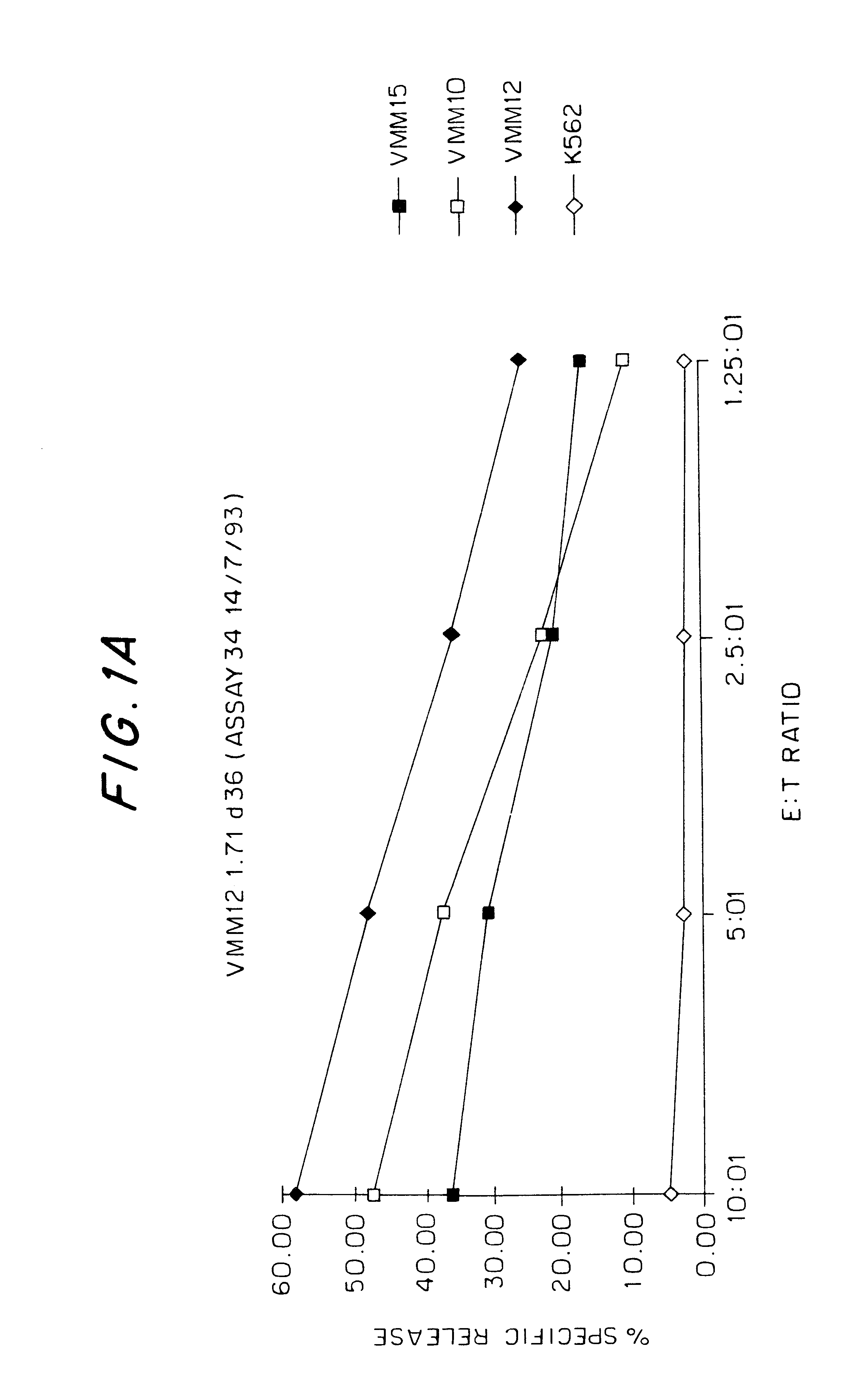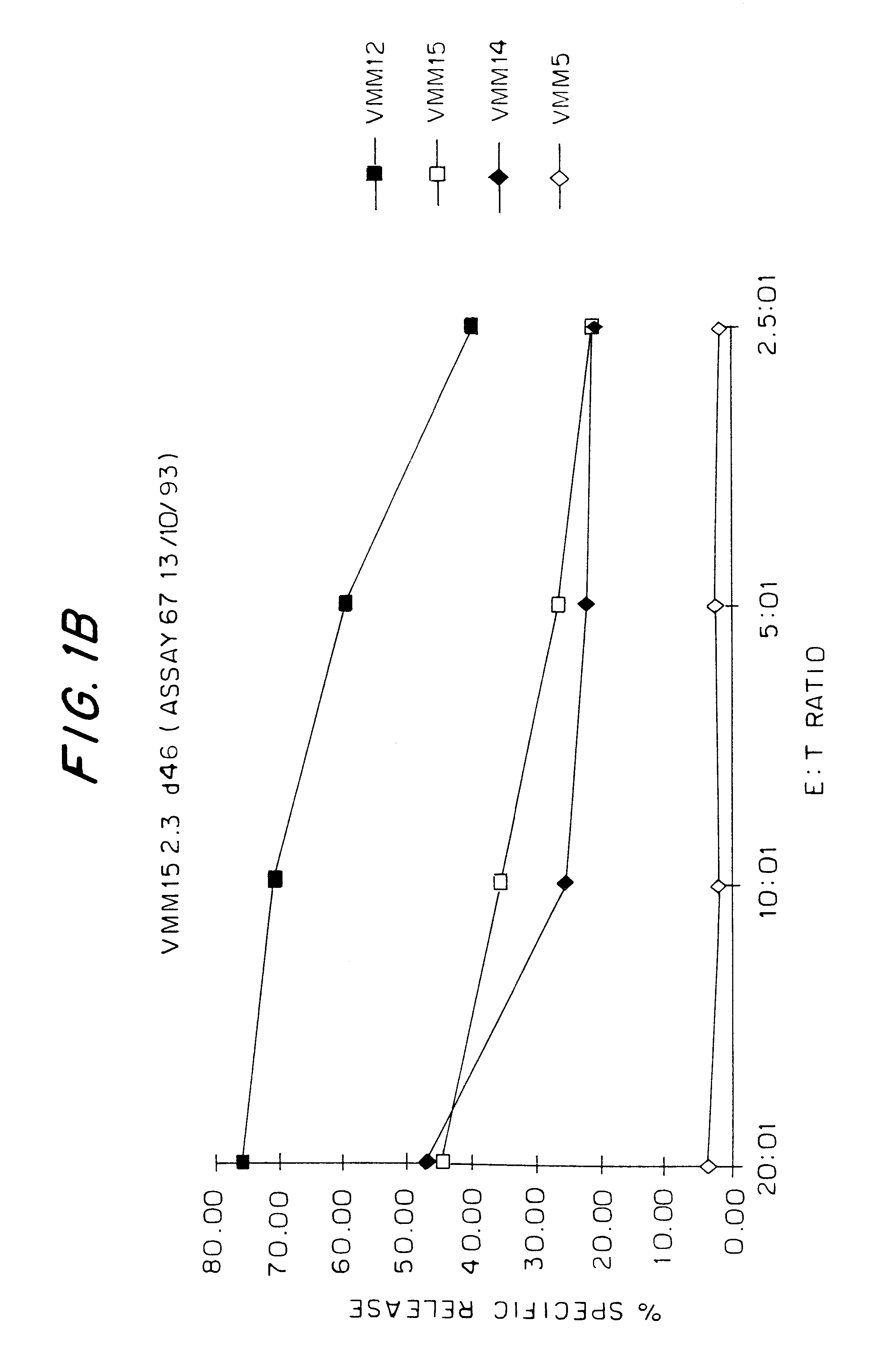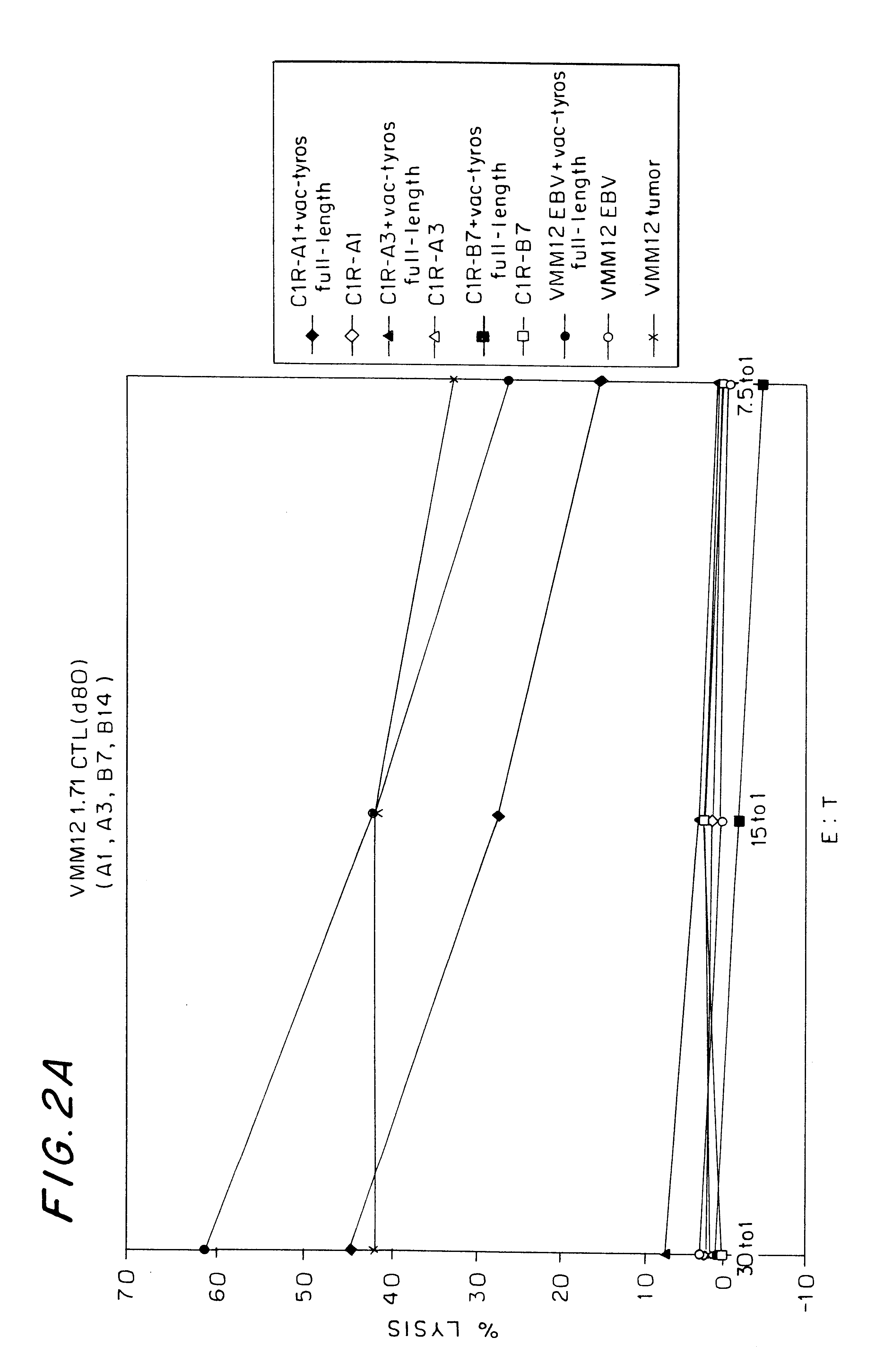Cysteine-depleted peptides recognized by A3-restricted cytotoxic lymphocytes, and uses therefor
a cytotoxic lymphocyte and a3-restricted technology, applied in the field of peptides, can solve the problems of affecting the interaction of the epitope with the class i mhc molecule or with the t cell receptor, affecting the specificity, and almost always fatal diseases,
- Summary
- Abstract
- Description
- Claims
- Application Information
AI Technical Summary
Problems solved by technology
Method used
Image
Examples
example a1-1
Identification of a Tyrosinase Epitope Recognized by Human Melanoma-Reactive, HLA-A1 Restricted CTLs
Introduction
We have identified the peptide KCDICTDEY (SEQ ID NO:19) (K is N-terminal), from the tyrosinase protein, as an epitope for HLA-A1-restricted melanoma-specific cytotoxic T-lymphocytes (CTL). This work has been done by generating HLA-A1-restricted melanoma-reactive CTL, creating a vaccinia construct encoding the intact human tyrosinase gene, then infecting HLA-A1+ non-melanoma target cells with the vac-tyrosinase construct. In doing so, VMM12 CTL and VMM15 CTL both recognize an HLA-A1-associated peptide derived from tyrosinase. We have since screened a large panel of peptides that we predicted to bind to HLA-A1, from the defined sequence of tyrosinase. The peptide KCDICTDEY (SEQ ID NO:19), when pulsed onto HLA-A1+ non-melanoma cells (C1R-A1), reconstitutes an epitope for VMM15 CTL. To a lesser extent, two other peptides that are longer than 9-residues, but which contain the e...
example a1-2
CTL from HLA-A1+ human melanoma patients recognize tyrosinase-derived epitopes
Melanoma-reactive CTL lines were generated from human melanoma patients and tested for reactivity against autologous and allogeneic melanomas and autologous and allogeneic B-LCL following transient expression of the melanocyte differentiation proteins Pmel-17 / gp100, MART-1 / Melan-A, and tyrosinase. These CTL lines were tested as soon as residual NK and lymphokine activated killer activities were low and reactivity against autologous melanoma could be demonstrated, typically at 25 to 40 days in culture. As shown in Table 201, reactivity against tyrosinase-derived epitopes was observed for five of the six HLA-A1+ CTL lines. The one HLA-A1.sup.+ CTL line that did not demonstrate reactivity against tyrosinase was derived from a patient whose tumor line, DM331, does not express tyrosinase or any other defined melanocyte differentiation proteins. Thus, tyrosinase-derived epitopes were recognized by CTL from all H...
PUM
| Property | Measurement | Unit |
|---|---|---|
| Fraction | aaaaa | aaaaa |
| Fraction | aaaaa | aaaaa |
| Fraction | aaaaa | aaaaa |
Abstract
Description
Claims
Application Information
 Login to View More
Login to View More - R&D
- Intellectual Property
- Life Sciences
- Materials
- Tech Scout
- Unparalleled Data Quality
- Higher Quality Content
- 60% Fewer Hallucinations
Browse by: Latest US Patents, China's latest patents, Technical Efficacy Thesaurus, Application Domain, Technology Topic, Popular Technical Reports.
© 2025 PatSnap. All rights reserved.Legal|Privacy policy|Modern Slavery Act Transparency Statement|Sitemap|About US| Contact US: help@patsnap.com



